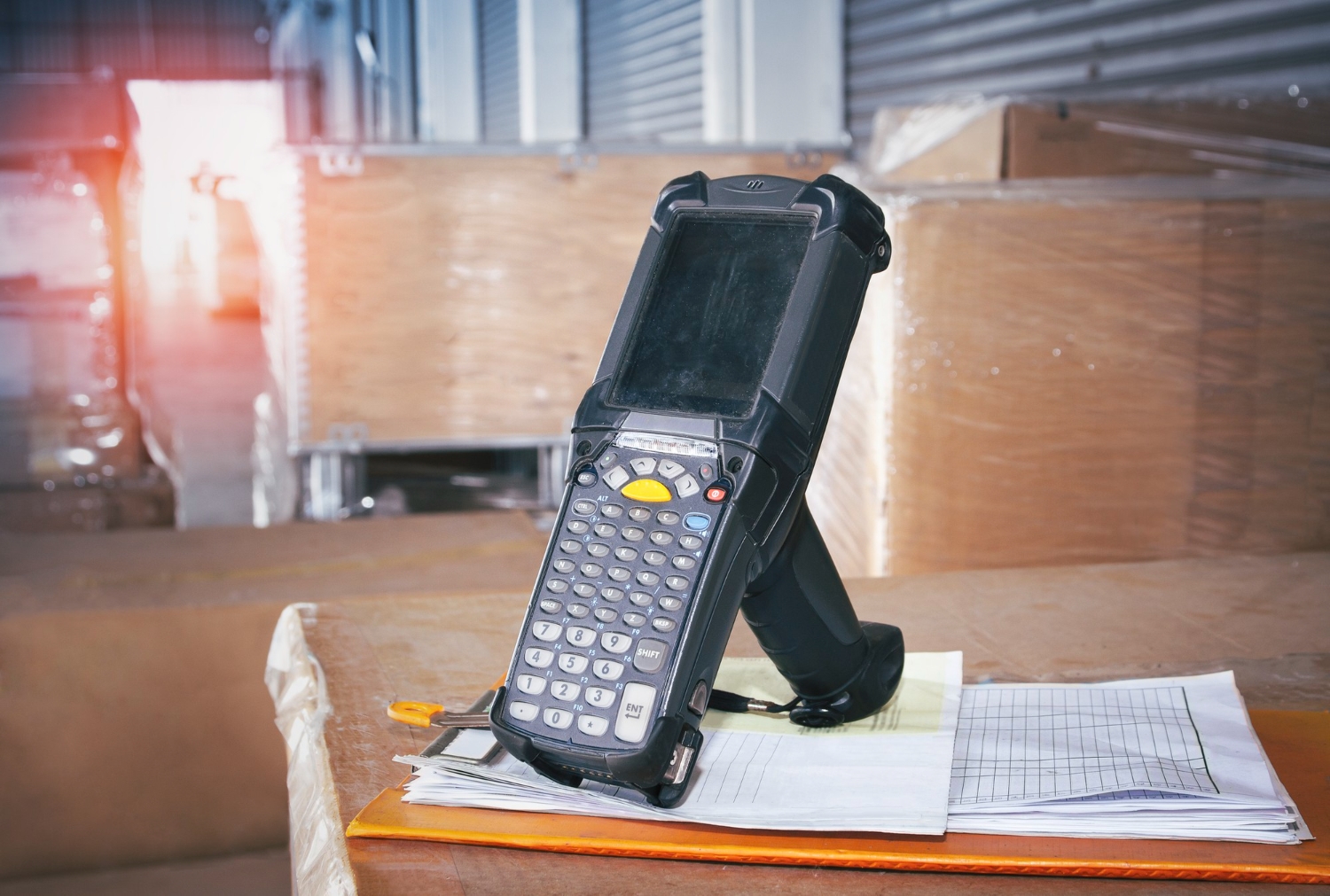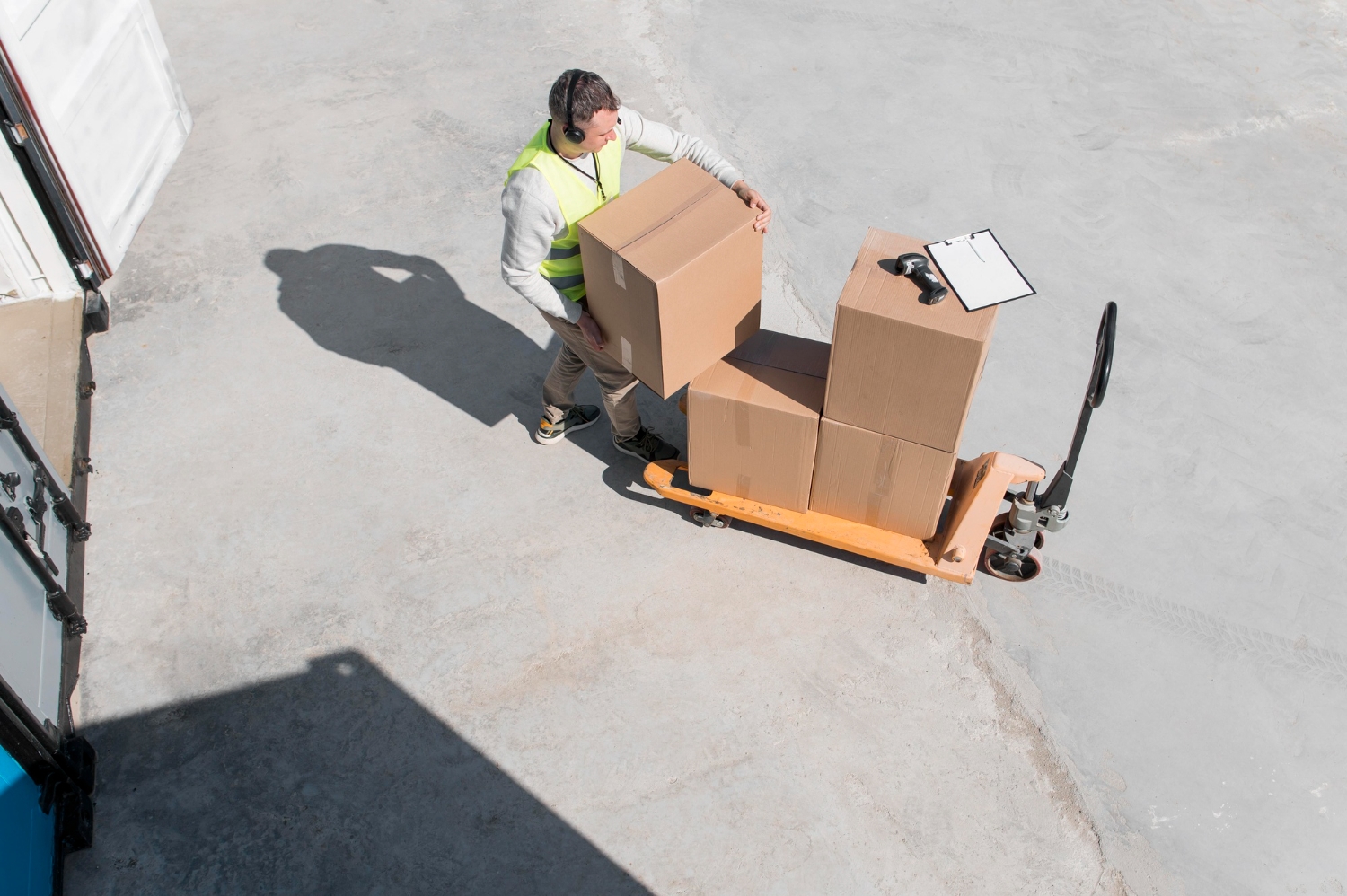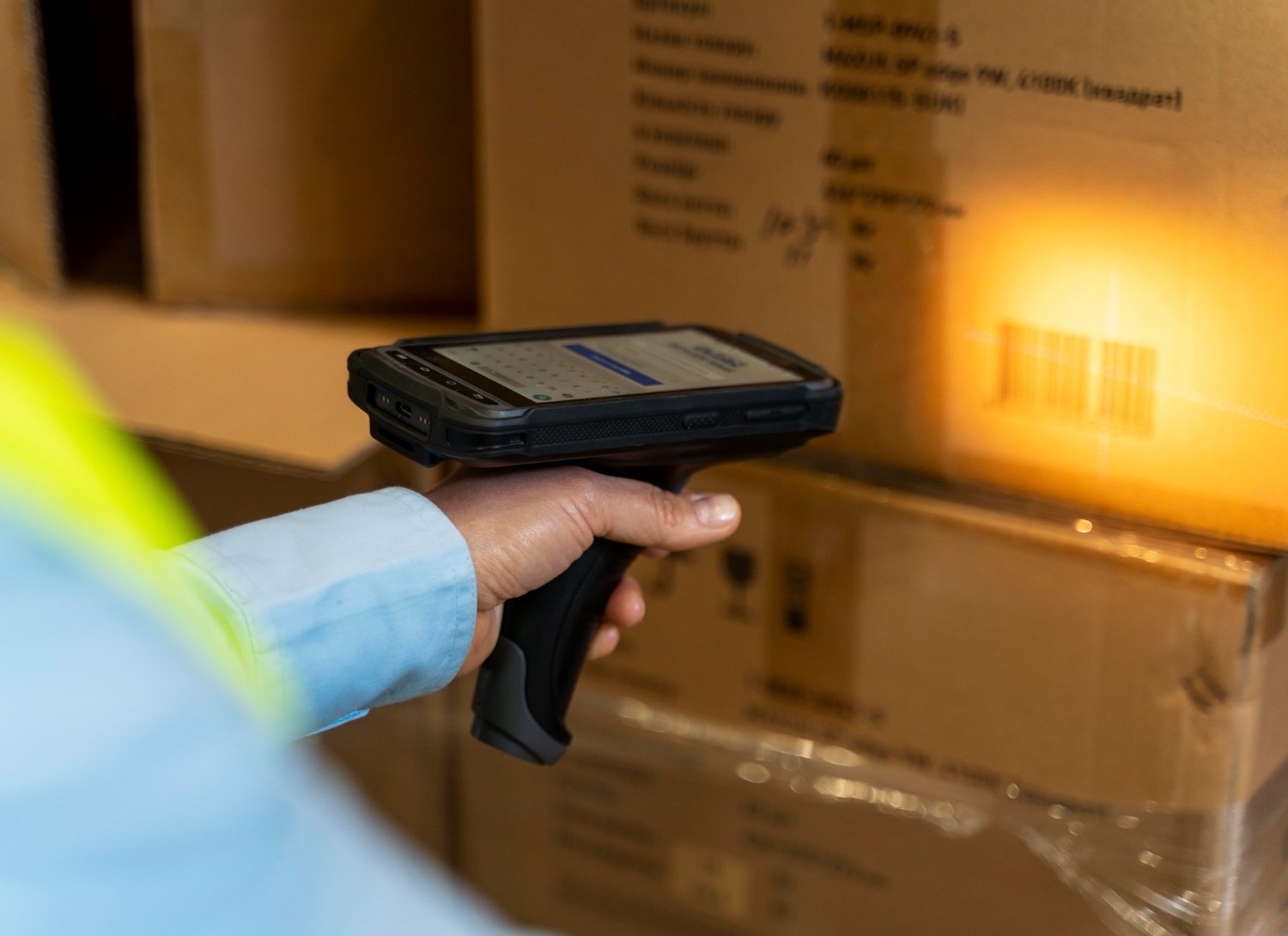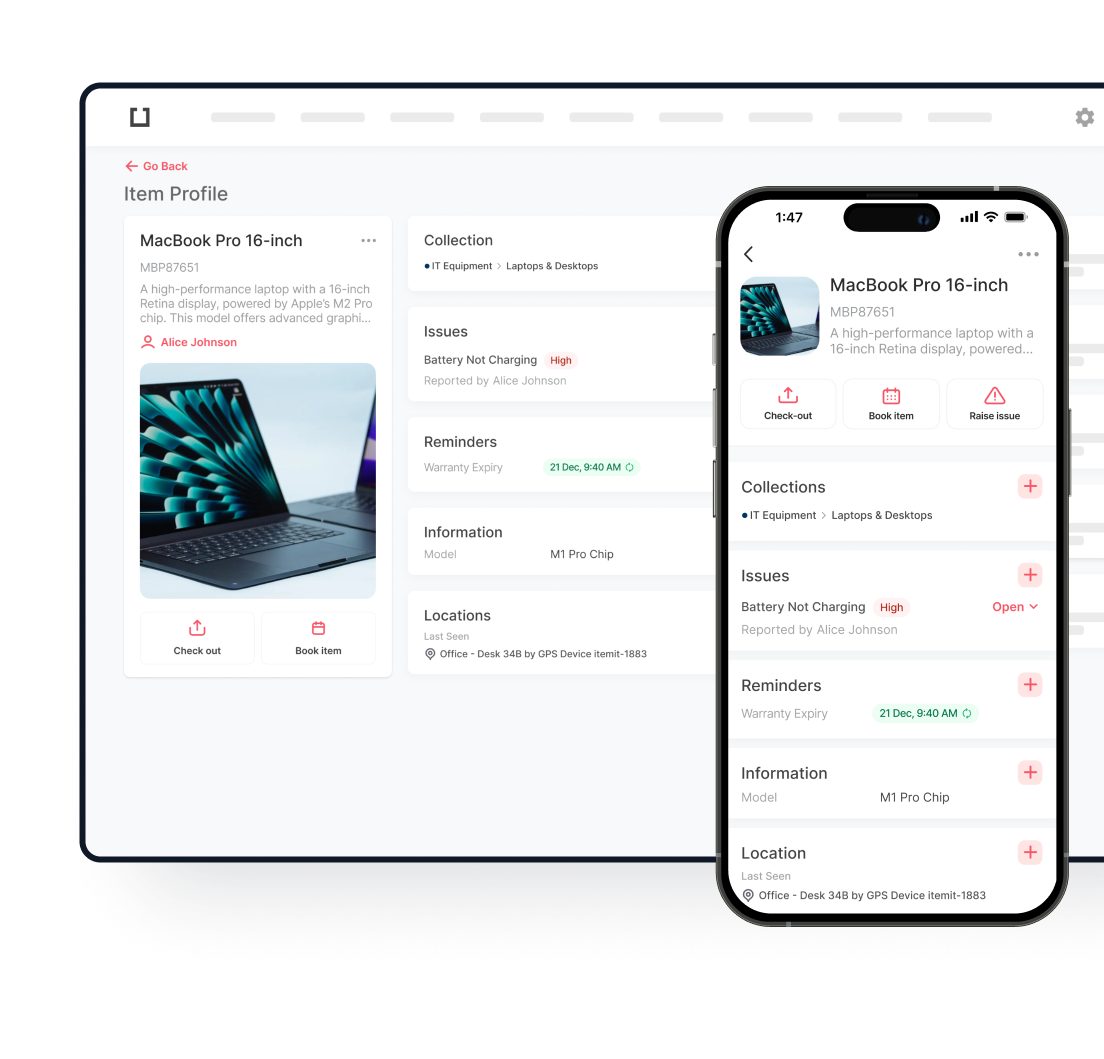
Asset tracking offers important operational benefits across several sectors. Using strong tracking solutions immediately results in major time and cost savings, whether you manage resources in business environments, supervise equipment at building sites, maintain medical devices in healthcare facilities, or handle assets in any other industry.
Modern fixed asset tracking software creates digital representations of your physical items, establishing a comprehensive asset register that serves as your centralised information hub. This digital ecosystem allows you to interact with asset profiles, append crucial maintenance records, and document location data systematically.
Incorporating fixed RFID readers into your tracking infrastructure can dramatically accelerate your processes, simplify operations, and introduce unprecedented levels of automation.
Understanding RFID Asset Tracking Fundamentals
Many organisations enhance their tracking capabilities by deploying unique asset tags. QR codes and barcodes remain popular choices, allowing you to physically connect items to their digital counterparts. The systematic tagging of fixed assets creates a foundation for reliable tracking, ensuring each item has a unique identifier in your system. When these tags are scanned, the corresponding digital profile instantly appears, ready for updates or information retrieval.
Each scan automatically refreshes location timestamps, gradually building a comprehensive movement history for every asset.
RFID fixed asset tracking offers distinct advantages over traditional methods. Unlike QR or barcode solutions that require direct visual alignment, RFID fixed readers can detect tags without line-of-sight requirements. This capability proves invaluable when tracking assets where visible tags would be impractical or aesthetically unacceptable.
Consider valuable artwork collections—applying visible QR codes would compromise the pieces’ integrity and appearance. In such scenarios, RFID fixed asset tracking systems provide the perfect solution.
To explore a real-world implementation of itemit’s RFID technology in the Ministry of Defence’s priceless art collection management, visit our case studies section.

Fixed vs. Handheld: Understanding RFID Reader Types
While smartphones natively support barcode and QR code scanning, fixed RFID technology requires specialised reading devices. These readers fall into two primary categories: handheld portable units and stationary fixed UHF RFID readers.
Handheld readers represent the most common implementation approach for RFID fixed asset tracking. These devices connect to your tracking application via Bluetooth and function similarly to conventional barcode scanners with button-activated tag detection. Read ranges vary depending on the specific tag technology employed.
By contrast, fixed RFID scanners are permanently placed at key points all over the structure. These devices track their surroundings automatically, noting each labelled asset that crosses range. Fixed RFID readers may identify whether an asset is entering or leaving a specified area using integrated directional antennae, therefore producing autonomous movement records free from human involvement.
Key differences between handheld and fixed RFID readers include:
- Mobility vs. Permanence: Handheld readers offer flexibility to move throughout your facility, while fixed RFID scanners provide consistent coverage at critical checkpoints.
- Manual vs. Automatic Operation: Handheld units require staff deliberate scanning actions, whereas fixed RFID systems capture asset movements without human involvement.
- Implementation Complexity: Handheld solutions typically offer simpler deployment with minimal infrastructure changes, while fixed RFID readers require thoughtful installation planning and network connectivity.
- Coverage Range: Most handheld readers operate effectively within 1-10 meters, while sophisticated fixed UHF RFID reader installations can cover significantly larger areas.
- Real-Time Capabilities: Fixed RFID software provides immediate movement detection and reporting, compared to the periodic scanning intervals inherent with handheld approaches.
- Investment Considerations: The overall fixed RFID reader price typically exceeds handheld alternatives initially, but often delivers superior long-term ROI through automation benefits.
Many organisations implement hybrid approaches, deploying fixed RFID readers at high-traffic locations while using handheld units for areas with occasional movement or during physical inventory counts.
The Transformative Impact of Fixed RFID Systems
Implementing fixed RFID reader technology introduces unprecedented automation to asset management workflows. Everything updates instantly in real time, removing the need for manual location updates typically required with handheld scanners or QR-based systems.
Fixed RFID software creates a virtual barrier around your worksite for equipment-intensive tasks like building. When tools or machinery leave the premises, the system instantly records their departure. Similarly, when assets return to the site, their arrival is documented without any staff intervention. This capability transforms accountability practices and provides unmatched visibility into asset movements and utilisation patterns.
The fixed RFID reader price represents an investment that quickly delivers returns through enhanced operational efficiency, reduced manual tracking requirements, and improved asset utilisation. Organisations typically see significant improvements in preventing loss, reducing unnecessary purchases, and optimising maintenance schedules.
Strategic Placement of Fixed RFID Readers for Maximum Coverage
Unlocking the full capability of fixed RFID readers requires careful thought about their location around your business. Strategic positioning minimises the number of devices needed and maximises scan accuracy—a key consideration when assessing the total fixed RFID reader cost for deployment.
Entry and exit points naturally serve as primary installation locations, creating automated checkpoints that track assets moving between areas. For facilities with multiple floors or departments, elevator lobbies and department entrances offer excellent monitoring positions. In warehouse environments, loading docks and storage zone transitions benefit significantly from fixed RFID scanner coverage.
Modern fixed RFID systems support network configurations where multiple readers work in concert, creating comprehensive coverage zones that eliminate tracking blind spots. Advanced placement strategies might include overlapping read fields to enhance detection reliability or creating deliberate choke points where assets must pass through narrow, well-monitored corridors.
The most sophisticated implementations incorporate ceiling-mounted readers with downward-facing antennas, providing expansive coverage while remaining visually unobtrusive. This approach proves particularly valuable in environments where aesthetics matter alongside functionality.

Industry-Specific Applications for Fixed RFID Asset Tracking
The versatility of RFID fixed asset tracking systems enables transformative applications across diverse business sectors. Each industry discovers unique implementation approaches that address their specific operational challenges.
In the medical field, fixed by tracking the transfer of critical medical devices between departments automatically, RFID readers transform equipment management. This feature guarantees that important assets are always accessible and streamlines compliance documentation for controlled machinery. Another important healthcare use for temperature-sensitive inventory monitoring is with specially designed RFID fixed asset tracking tags including environmental sensors.
Fixed UHF RFID reader networks are used in manufacturing to follow work-in-progress across production lines, providing real-time visibility into manufacturing bottlenecks. Readers positioned at stockroom entrances automatically update merchandise placements as goods pass between storage and the sales floor, similarly changing retail inventory management.
Educational institutions implement RFID fixed asset tracking to manage valuable equipment across sprawling campuses, from audiovisual gear to scientific instruments. The automated nature of fixed RFID systems proves particularly valuable for resources shared across multiple departments or buildings.
Integration Capabilities and Enterprise System Connectivity
Modern fixed RFID software platforms extend well beyond basic tracking functionality, offering sophisticated integration capabilities that connect asset data with broader enterprise systems. This interconnectedness substantially amplifies the technology’s value proposition.
Key integration capabilities and connectivity features of advanced RFID fixed asset tracking systems include:
- Enterprise Resource Planning (ERP) Connectivity: Leading solutions provide API libraries and pre-built connectors that facilitate seamless data exchange with ERP systems, enabling automated asset record synchronisation and unified reporting.
- Maintenance Management Integration: Direct connections to computerised maintenance management software (CMMS) allow scheduling preventive maintenance based on actual asset movement patterns and usage metrics captured by fixed RFID readers.
- Financial System Synchronization: Automated data flows support precise depreciation calculations, expense allocation, and procurement workflows triggered by equipment utilisation metrics tracked through fixed RFID software.
- Multi-Location Aggregation: Cloud-based fixed asset RFID tracking platforms deliver particular advantages for enterprises with distributed operations, consolidating data from fixed RFID readers across facilities into centralised management dashboards.
- Real-Time Alerting Systems: Integration with notification platforms enables automated alerts when tagged assets move through unauthorised zones or exit facility boundaries without proper documentation.
- Business Intelligence Connectivity: Advanced RFID fixed asset tracking solutions offer data export capabilities and visualisation tools that integrate with business intelligence platforms for deeper asset utilisation analysis.
- Customisable Workflow Triggers: Enterprise-grade systems support configurable automation rules, initiating specific actions when fixed RFID scanners detect predefined movement patterns or threshold conditions.
Modern systems offer phased implementation approaches for organisations with existing asset management processes. This flexibility allows businesses to start with basic fixed RFID tracking and progressively expand connectivity with other enterprise systems as they validate the technology’s benefits.
Implementing Fixed RFID Solutions for Your Business
Determining whether RFID fixed readers suit your specific tracking needs requires careful assessment of your operational requirements, physical environment, and budget considerations. The technology offers particularly compelling advantages for high-value asset tracking, inventory management in challenging environments, and operations requiring minimal human intervention in tracking processes.
Modern fixed asset RFID tracking solutions integrate seamlessly with comprehensive asset management platforms, providing unified visibility across your entire asset portfolio. The itemit system offers flexible implementation options, allowing organisations to start with basic tracking and gradually expand into more sophisticated automated monitoring as needs evolve.
To explore whether RFID fixed asset tracking systems align with your organisational requirements, contact our implementation specialists at team@itemit.com or call 01223 421611. Alternatively, you can experience the capabilities firsthand by starting a complimentary trial of the itemit asset tracking platform using the form below.

Try itemit
Choose a better way to track your assets. Start your free 14-day trial now!

Keep Learning
itemit Blog
Tips, guides, industry best practices, and news.
What is an IT Asset Register?
An IT asset register helps to ensure all your hardware and computers are logged and monitored correctly. Instantly see where equipment is and who has it.
Stock vs Inventory in Asset Management
Discover the crucial differences between stock vs inventory in asset management. Learn how to optimize business operations with best practices and strategic
Asset Utilisation: Definition, Calculation Methods, and Its Importance
[lwp_divi_breadcrumbs font_icon="5||divi||400"...




